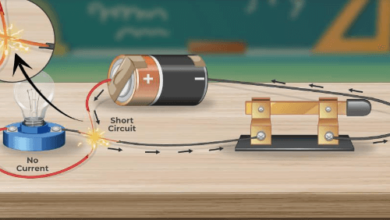Bright Ideas: How Solar Grants and the Right Solar Size Can Power Your Home

Solar energy comes from the sun and can be used to power homes and gadgets. It’s great because it doesn’t pollute the air, and once you set it up, the sun’s power is free! Now, even though solar panels are a smart choice, they can be expensive to buy and install. Luckily, there are solar grants available. These grants help make the cost more manageable so more families can enjoy clean energy. Next, we’ll explore how these grants can help you, and what you need to know to pick the right size solar system for your house.
Understanding Solar Grants
Solar grants are special funds given by organizations to help people afford solar panels. These grants are very helpful because they lower the cost of getting solar panels, making it easier for more families to use clean energy from the sun. Also, these grants are not just for homes; schools and other places can get them too. This means more people everywhere can enjoy the benefits of solar energy.
Firstly, solar grants can cover a big part of the expenses. This includes buying the panels and paying for the installation. By doing this, the grants make it less worrying for families to switch to solar power. Moreover, various types of grants are available depending on where you live and what your needs are. It’s important to know that each grant has its own rules. For instance, some grants might only pay for the equipment, while others might help with the costs of setting up too.
Determining the Right Solar Size
Solar size refers to how big or small your solar panel system needs to be to power your home effectively. It’s important to get this right because if the system is too big, it costs more than it should, and if it’s too small, it won’t generate enough power for your needs.
Firstly, consider how much energy your household uses. This will help you figure out the size of the system you need. For example, a larger home with lots of appliances might need more panels compared to a smaller home. Additionally, think about where you live. Places with more sunshine might need fewer panels than areas that are cloudy a lot.
Secondly, you’ll want to think about the space on your roof. You need enough room to fit the number of panels you calculate as necessary. Also, the direction your roof faces affects how much sunlight hits the panels, influencing their efficiency.
Moreover, finding out how to calculate your solar size isn’t hard. You can use simple tools online that take into account your energy use, roof space, and sunlight in your area. This step is essential, so you know your system will work well for your home.
How to Apply for Solar Grants
Applying for a solar grant might seem tricky, but it’s actually quite straightforward once you know the steps. First, you’ll need to find out what grants are available in your area. Different places have different grants, so it’s important to look for the ones that you can apply for.
Next, it’s essential to understand the requirements for each grant. Somesolar grants might ask you to provide details about your home, like how much energy you use or the size of your roof. They might also want to know why you’re choosing solar energy. Gathering all this information before you start your application will make the process smoother.
Then, you can start filling out the application. Make sure to answer all the questions clearly and truthfully. If the application asks for documents, like a bill to show your energy usage, make sure you attach them. Also, if you need help, don’t hesitate to ask for it from experts or people who have already gone through the process.
Lastly, after submitting your application, you’ll need to wait for a response. This can take some time, so be patient. While waiting, it’s a good idea to start planning where you would install your solar panels if you get the grant.
By following these steps, you can increase your chances of getting a solar grant. This will help you move forward with installing solar panels and saving on energy costs. After applying for the grant, the next thing to learn about is the installation process and legal things to consider, which we’ll cover in the next section.
Legal Considerations and Installation Process
When you’re ready to install solar panels, it’s important to understand both the legal and practical steps involved. First, you should know about any legal agreements or permissions needed. This includes checking local rules about installing solar panels and possibly getting permission from city or neighborhood authorities. It’s also wise to make sure you understand the contract from your solar provider.
Next, the installation process begins. Usually, a professional team will come to your home to install the panels. They start by preparing your roof to make sure it can hold the panels safely. Then, they install the panels and set up connections to your home’s electrical system. This part should be done carefully to ensure everything works well and safely.
Moreover, it’s a good idea to stay in touch with the installation team. Ask questions if you’re curious about a step or need clarification. This keeps you informed about what’s happening on your roof.
Lastly, once the panels are installed, there’s usually a final check or inspection to make sure everything was set up correctly. After this, you can start using the solar energy your panels collect.
Remember, each step in this process is crucial for a smooth and successful installation. This understanding not only prepares you for what to expect but ensures you can handle any issues that might arise. After learning about installation and legal considerations, wrapping up everything we’ve learned will help solidify your plans to go solar.
Final Words
Choosing the right solar size and applying for solar grants are smart steps toward using clean energy and saving money. As we’ve learned, understanding solar grants can significantly reduce the cost of installing solar panels, making this eco-friendly option more accessible. Also, determining the correct solar size ensures your system is efficient for your specific needs. Moreover, knowing the application process for grants and the installation details helps prepare you for a smooth transition to solar power. Finally, embracing solar energy is not just good for your wallet—it also helps our planet by reducing pollution. So, consider how these steps can lead you toward a brighter, greener future.






